WHEN BROOKLYN WAS (PRE-) FAB (1946)
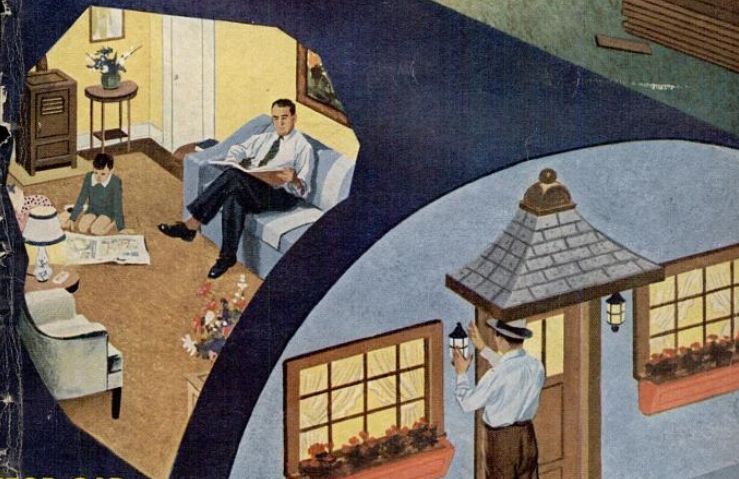
Brownstone Detectives investigates the history of our clients’ homes.
The story you are about to read was composed from research conducted in the course of one of those investigations.
Do you know the history of YOUR house?
********************************************************************************************************************************
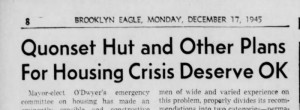
When Johnny came marching home again – he found a housing shortage.
As World War II ended right on the tail end of the Depression, the City of New York realized it had a crisis on its hands.
Relatively little housing had been built in the previous 15 years and suddenly, with the war winding down, veterans would be returning en masse to a “smaller” city.
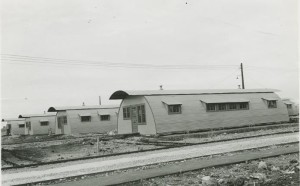
Robert Moses proposed the temporary solution that seemed to perfectly address the veteran housing shortage – quonset huts.
Servicemen would certainly be familiar with them – those curved corrugated “shacks” so familiar to the boys who fought in the Pacific. Used there as quickly built administrative offices and barracks, they were the solution for an army “on-the-go.”
But would veterans want to live in them – again?
BROOKLYN’S HUTS GO UP
In Brooklyn, after much heated debate as to what to build, where, and for how much, acres of land in Canarsie, Jamaica Bay, and the area along the Belt Parkway in the south of Brooklyn, were all selected upon which to build temporary public housing in the form of the Federal surplus quonset huts.
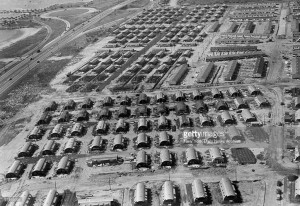
These structures, with their curved, corrugated roofs, potbellied stoves in each living room for heat, and a common ground between the rows of houses, took some time to arrive in the City – and then some time to put up.
Builders seemed to not have realized the difficulty of putting these pre-fabbed buildings together and then fitting them out on the inside as living spaces.
Everything was different with them compared to the construction of normal houses.
Eventually, though, the huts went up and many servicemen and their families found new homes in them.
Apparently, the families of many service personnel benefitted from this program in an environment when they may not have had assistance otherwise.
BROOKLYN’S HUTS COME DOWN
The huts lasted until about the mid-50s when more permanent housing or parks replaced them, but not before the veterans housed in them began to complain of their dilapidated conditions. Most concerning to the men and their families – from the litany of issues that were realized – was the fact that the buildings leaked and that they were difficult to warm in the winter.
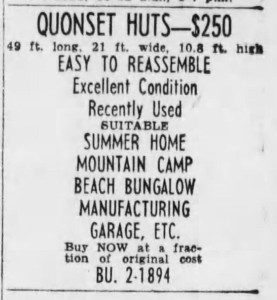
When the housing shortage began to be alleviated and the former military families started to move out, the quonset huts started to come down. Moving out of this form of public housing, though, presented its own series of problems, chief amongst them a cost of living that these servicemen did not remember from before the war. As a result, many of them began to decamp from the city for parts west. (Ironically, when a reunion of the families that had lived in one Brooklyn quonset village took place, only 7% of them still lived in Brooklyn.)
Throughout the 1950s, with a glut of used and unused quonset huts still available, the pre-fab housing began being marketed to the public by salvage dealers for use as garages, storage units, and, yes – homes.
If you walk or drive around Brooklyn enough, you begin to notice these quonset huts, still standing, still in use and, like the many military men who used them, still serving. A good number can actually be found in the vicinity of Broadway, primarily on the Bedford-Stuyvesant side, tucked in between brownstones and rowhouses, unobtrusively observing all that passes.
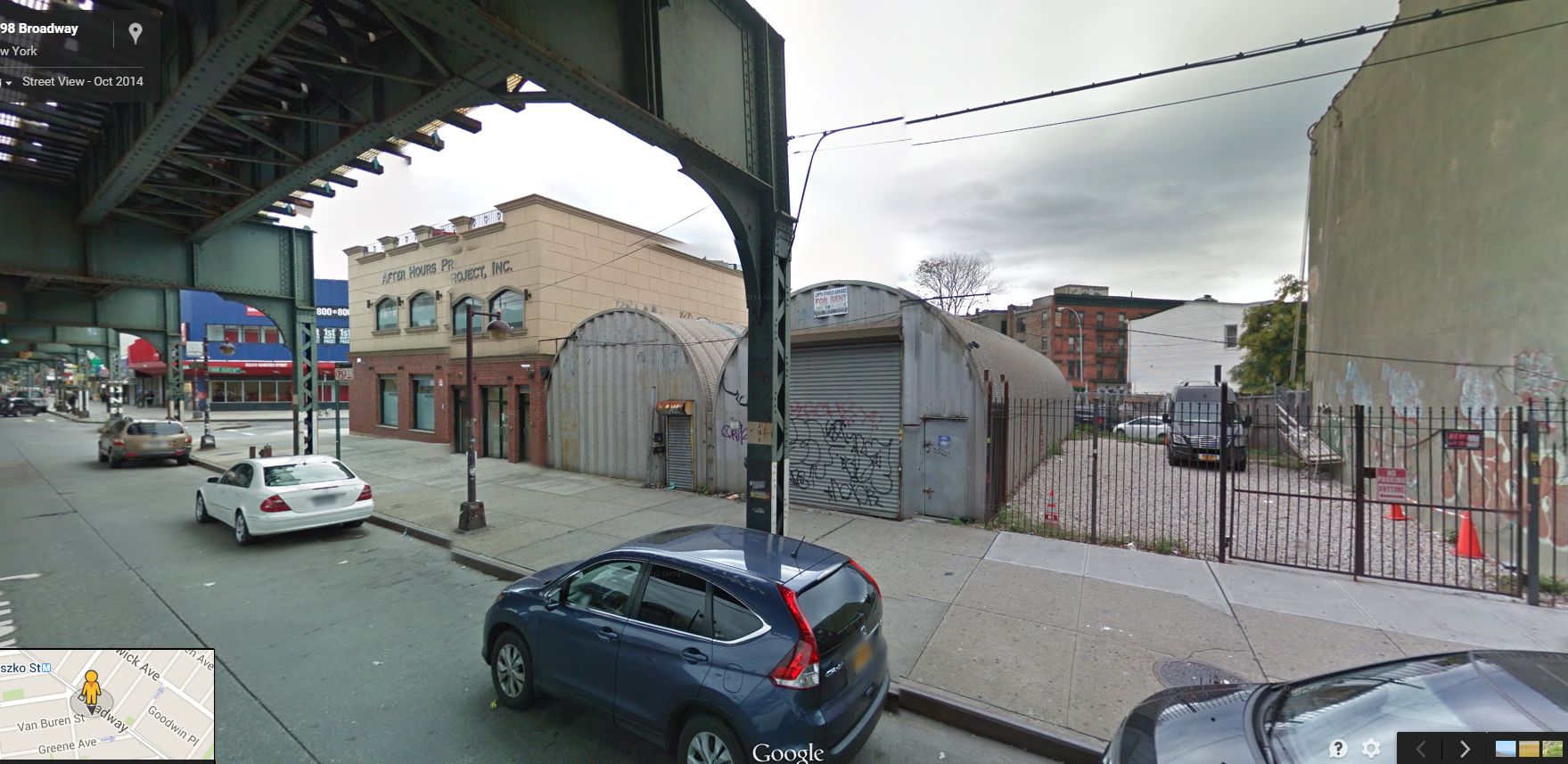
———————————————————————————————————————–
 Brownstone Detectives is an historic property research agency. Our mission is to document and save the histories of our clients’ homes. From our research, we produce our celebrated House History Books and House History Reports. Contact us today to begin discovering the history of your home.
Brownstone Detectives is an historic property research agency. Our mission is to document and save the histories of our clients’ homes. From our research, we produce our celebrated House History Books and House History Reports. Contact us today to begin discovering the history of your home.